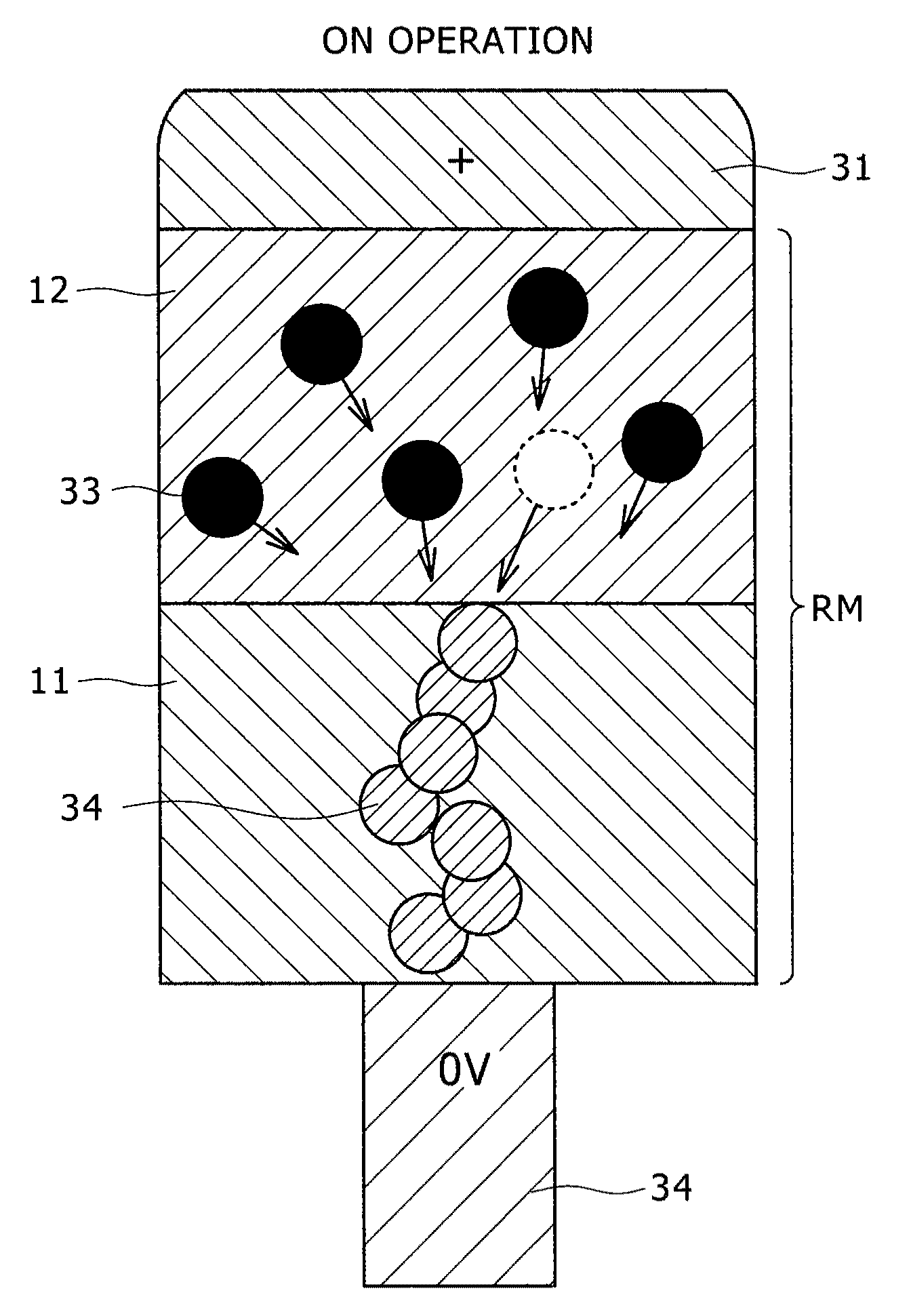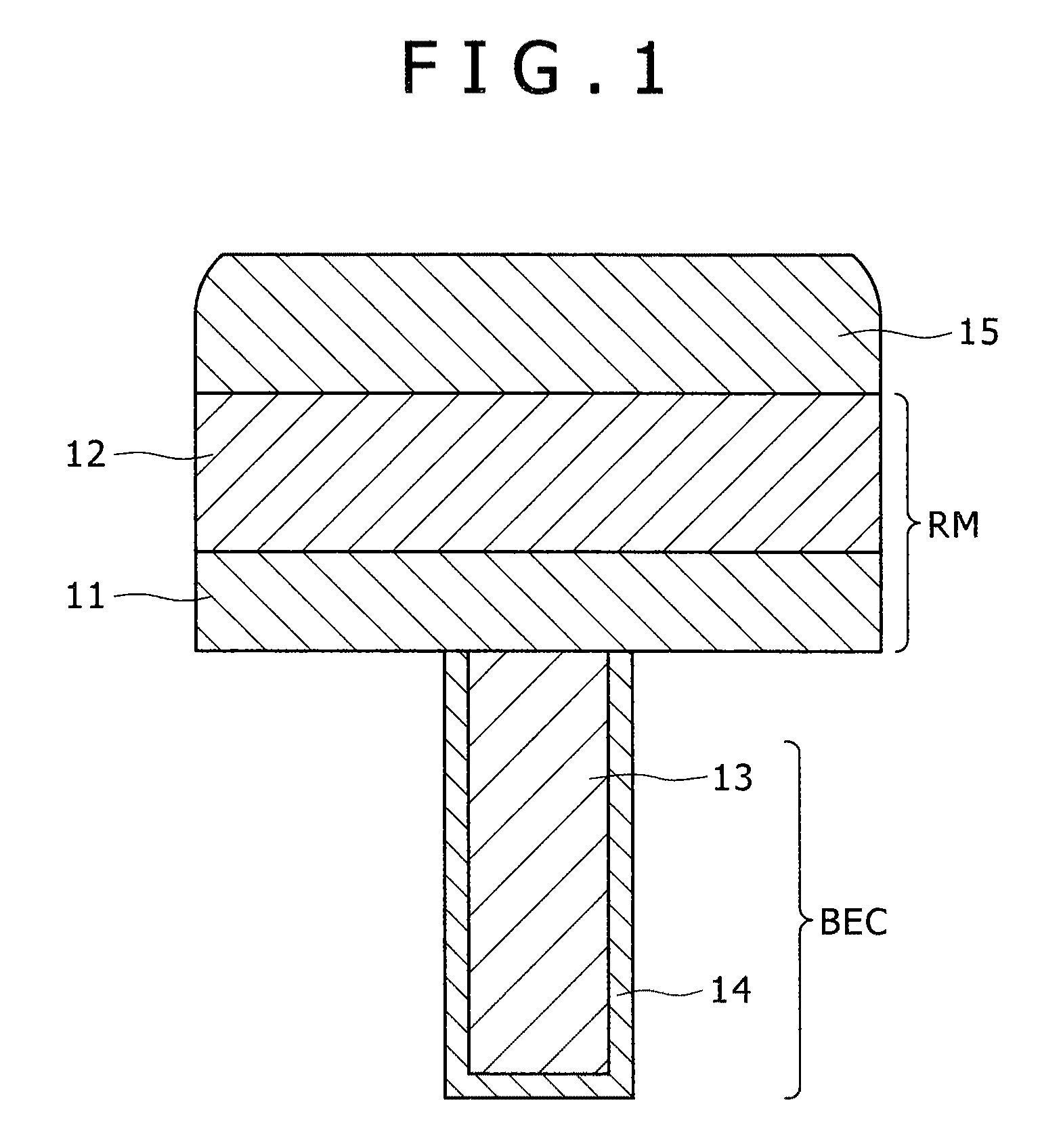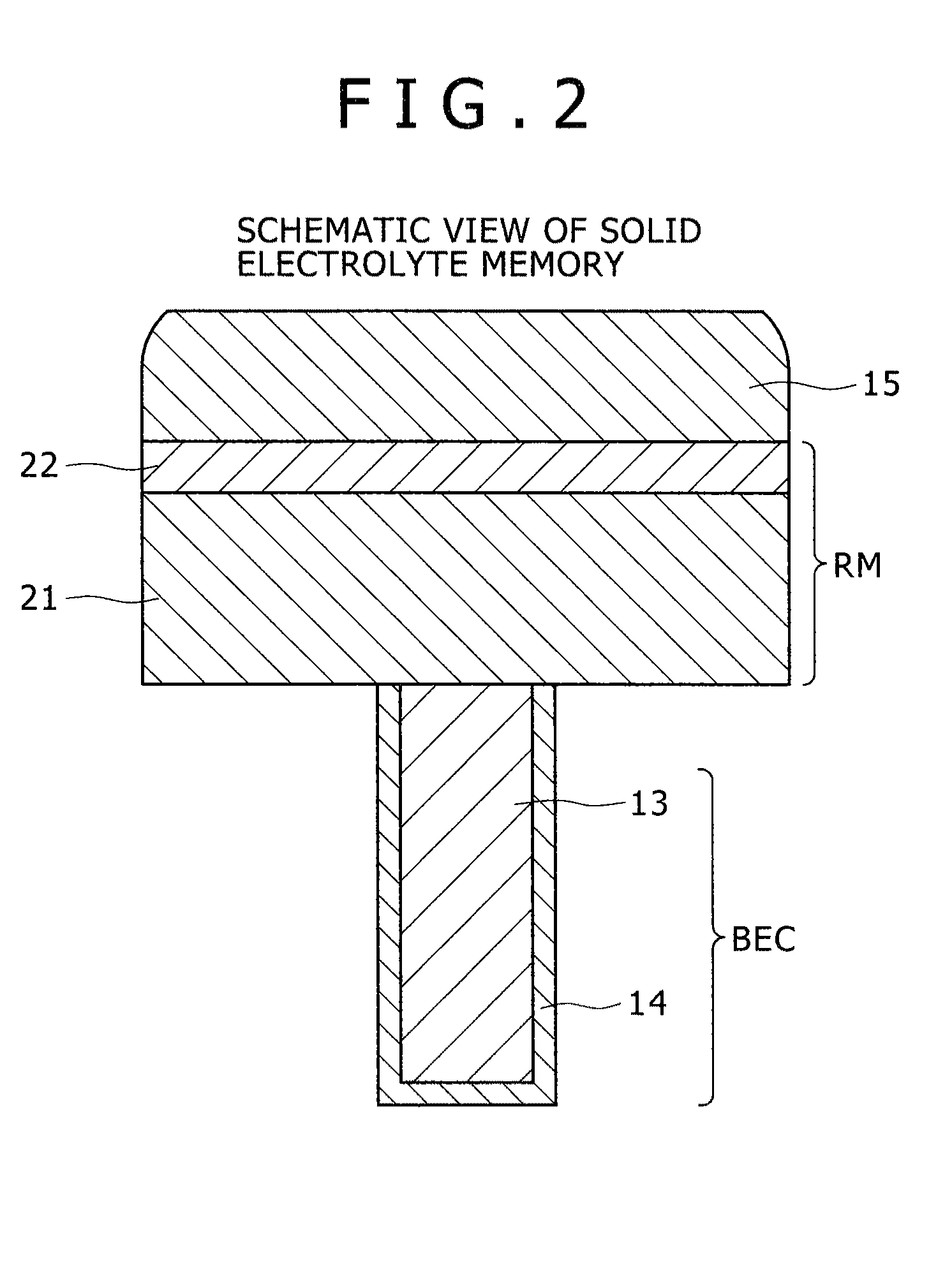Semiconductor device and method of manufacturing the same
a technology of semiconductors and semiconductors, applied in the direction of semiconductor devices, bulk negative resistance effect devices, electrical appliances, etc., can solve the problems of difficult rewriting, achieve stable rewriting, suppress the formation of voids of ion supply sources, and change the resistance of the memory area rm
- Summary
- Abstract
- Description
- Claims
- Application Information
AI Technical Summary
Benefits of technology
Problems solved by technology
Method used
Image
Examples
embodiment 1
[0047]FIG. 1 is a cross sectional view showing the constitution of a memory device using a solid electrolyte material according to the first embodiment of the invention. As shown in the drawing, the memory device of the invention has a structure in which a memory area RM where an ion confinement layer 11 and an ion supply layer 12 are stacked is sandwiched between a lower electrode BEC and an upper electrode 15. The lower electrode BEC includes an adhesion layer 14 and a plug material 13. For the adhesion layer 14, TiN of excellent burying property to a hole shape of fine dimension can be used for example. As the material for the plug material 13 and the upper electrode 15, W of low electric resistance can be used. As the material for BEC, TiAlN or TiW, TiSiC, TaN, carbon cluster (carbon allotrope such as C60) as high melting materials can be used. In this case, as a method of eliminating an electroconductive filament, a method of generating Joule heat to the ion confinement layer a...
embodiment 2
[0077]This embodiment has a feature that the ion confinement layer is crystallized by laser irradiation in the Cu—Ta—O crystallization methods shown in FIG. 13.
[0078]Film formation of Cu—Ta—O is performed as described below. An amorphous Cu—Ta—O film is formed while controlling the substrate temperature upon sputtering to such a low level that Cu—Ta—O is not crystallized. Then, crystallization is performed for Cu—Ta—O by using laser irradiation.
[0079]Elevation for the temperature of the silicon wafer substrate can be mitigated by using laser irradiation not by a heat treatment using a furnace. Thus, since not only the problem that the transistor characteristics are deteriorated due to movement of a dopant in the diffusion layer can be avoided but also degradation of Low-k material can further be prevented, a Low-k material can be used for the interlayer dielectric film. By using the Low-k material, wiring delay in the semiconductor circuit can be mitigated and high speed operation c...
embodiment 3
[0083]This embodiment has a feature in crystallizing Cu—Ta—O by applying heat treatment in an electric furnace or IR furnace after forming an amorphous Cu—Ta—O film among the crystallization methods for Cu—Ta—O in FIG. 13. A fine crystal structure can be obtained by performing crystallization while taking a long time since this can suppress the crystal growing rate and, relatively, increase the probability of formation of crystal nuclei. Since this can make the number of grain boundaries on BEC uniform, effects of grain boundaries on the rewriting operation can be averaged. As a result, a semiconductor circuit device of less variation can be provided. The heat treatment time is, for example, 30 min. As described in Embodiment 1, since the crystallization temperature for Cu—Ta—O is 600° C. or higher, the heat treatment temperature is preferably 600° C. or higher.
PUM
 Login to View More
Login to View More Abstract
Description
Claims
Application Information
 Login to View More
Login to View More - R&D
- Intellectual Property
- Life Sciences
- Materials
- Tech Scout
- Unparalleled Data Quality
- Higher Quality Content
- 60% Fewer Hallucinations
Browse by: Latest US Patents, China's latest patents, Technical Efficacy Thesaurus, Application Domain, Technology Topic, Popular Technical Reports.
© 2025 PatSnap. All rights reserved.Legal|Privacy policy|Modern Slavery Act Transparency Statement|Sitemap|About US| Contact US: help@patsnap.com



